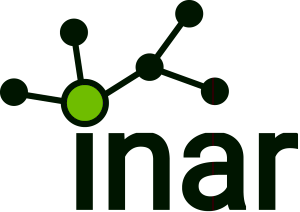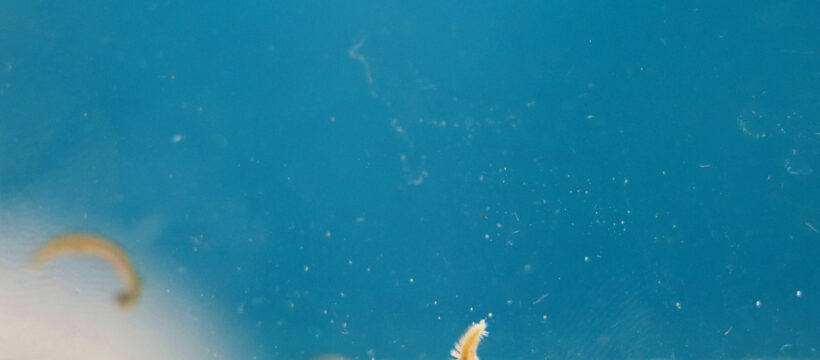Vienna, Austria, June 1st, 2022: Animals possess circadian clocks, or 24 h oscillators, to regulate daily behavior. These typically take their cues from the periodic change of sunlight and darkness. However, many animals are also exposed to moonlight, which re-occurs with ~25h periodicity. The labs of Florian Raible at the Max Perutz Labs, a joint venture of the University of Vienna and the Medical University of Vienna, and Kristin Tessmar-Raible (Max Perutz Labs, Alfred Wegener Institute, University of Oldenburg) have now discovered that moonlight adjusts the daily clock of marine bristle worms, which helps them to fine-tune their reproductive cycle to certain hours during the night. The study, published in the Proceedings of the National Academy of Sciences, provides an explanation for the phenomenon that daily clocks from flies to humans can exhibit plastic run-times.
(Download image here; details and copyright see below: https://medienportal.univie.ac.at/uploads/tx_univiemedienportal/zip/37839/images.zip)
In order to produce the next generation, the marine bristle worm Platynereis dumerilii releases its eggs and sperm freely into the open seawater. The correct timing of their reproductive cycles is therefore essential for the survival of the species. It was already known that bristle worms schedule their reproduction to few days of the month. Now, the researchers uncovered that they also synchronize to very specific hours during each night. “We show that moonlight determines when, precisely, during the night the worms start their reproductive behavior, which is always during the darkest portion of the night”, explains first author Martin Zurl. Rather than acting as the direct stimulus for swarming, moonlight changes the circadian clock period length. In nature, the time of moonlight changes every day by about 50 minutes. The plasticity of the clock allows the worms to factor in these changes.
The scientists collaborated with the labs of Robert Lucas at the University of Manchester (UK) and Eva Wolf at the Institute of Molecular Biology Mainz and University of Mainz (Germany) to characterize the light receptors involved in this process. They identified that the combinatorial functions of an opsin – closely related to the mammalian circadian photoreceptor melanopsin – and a cryptochrome differentially decode sun- and moonlight to adjust the plastic daily clock. In a collaboration with the lab of Charlotte Helfrich-Förster at the University of Würzburg (Germany) the researchers showed that the specific decoding of moonlight is also relevant for the daily clocks of other species.
The impact of light intensity on the period length of circadian clock has been documented for various organisms under artificial lab conditions for decades. However, the physiological relevance of these observations has been unclear. “Our work reveals that there is an ecological meaning behind the observation that the circadian clock of an individual can run with different speeds”, explains Kristin Tessmar-Raible. Of note, humans show such circadian plasticity, too. For instance, patients with bipolar disorder exhibit enigmatic circalunidian (i.e. 24.8h) periods correlated with their mood switches. The scientists hope that their work will help to understand the origin and consequences of biological timer plasticity, as well as its interplay with natural timing cues.
Original Publication: Martin Zurl, Birgit Poehn, Dirk Rieger, Shruthi Krishnan, Dunja Rokvic, Vinoth Babu Veedin Rajan, Elliot Gerrard, Matthias Schlichting, Lukas Orel, Aida Ćorić, Robert J. Lucas, Eva Wolf, Charlotte Helfrich-Förster, Florian Raible,and Kristin Tessmar-Raible: Two light sensors decode moonlight versus sunlight to adjust a plastic circadian/circalunidian clock to moon phase. Proceedings of the National Academy of Sciences 2022
doi: 10.1073/pnas.2115725119
Press contacts
Mag. Alexandra Frey
Press and Information Office of the University of Vienna
Universitätsring 1, 1010 Vienna
T +43-1-4277-175 33
Mag. Sándor Fülöp, MA
Communications Manager Max Perutz Labs Vienna
Dr.-Bohr-Gasse 9, 1030 Vienna
T +43-1-4277-24013
E communications@maxperutzlabs.ac.at
Scientific contacts
Assoz. Prof. Dr. Florian Raible
Department of Microbiology, Immunology and Genetics
Max Perutz Labs Vienna
Dr.-Bohr-Gasse 9, 1030 Vienna
T +43-1-4277-54616
Univ.-Prof. Dr. Kristin Tessmar-Raible
Department of Microbiology, Immunology and Genetics
Max Perutz Labs Vienna
Dr.-Bohr-Gasse 9, 1030 Vienna
T +43-1-4277-74635
E kristin.tessmar-raible@univie.ac.at
Text and photo view on the media portal: https://medienportal.univie.ac.at/presse/aktuelle-pressemeldungen/detailansicht/artikel/rendezvous-at-night-how-moonlight-fine-tunes-animal-reproduction/
Photo download: https://medienportal.univie.ac.at/uploads/tx_univiemedienportal/zip/37839/images.zip
FOTO: Bristleworms_spawning_(c)_Florian_Raible_Universität_Wien
——————————————————
genuinely curious. Since 1365.
The University of Vienna is one of the oldest and largest universities in Europe. This makes the University of Vienna Austria’s largest research and education institution: Around 7,400 interconnected academics work at 20 faculties and centres on new solutions, thus contributing significantly to the further development of society. The University of Vienna cooperates with the business world, culture and society. The aim of discovering innovations with genuine curiosity unites researchers, students and lecturers. Approximately 10,000 students graduate from one of the University of Vienna’s 179 degree programmes every year. The University prepares them for a professional career and encourages critical thinking and self-determined decision-making.
UNIVERSITÄT WIEN | Universitätsring 1 | 1010 Wien | T +43-1-4277-0 | www.univie.ac.at

